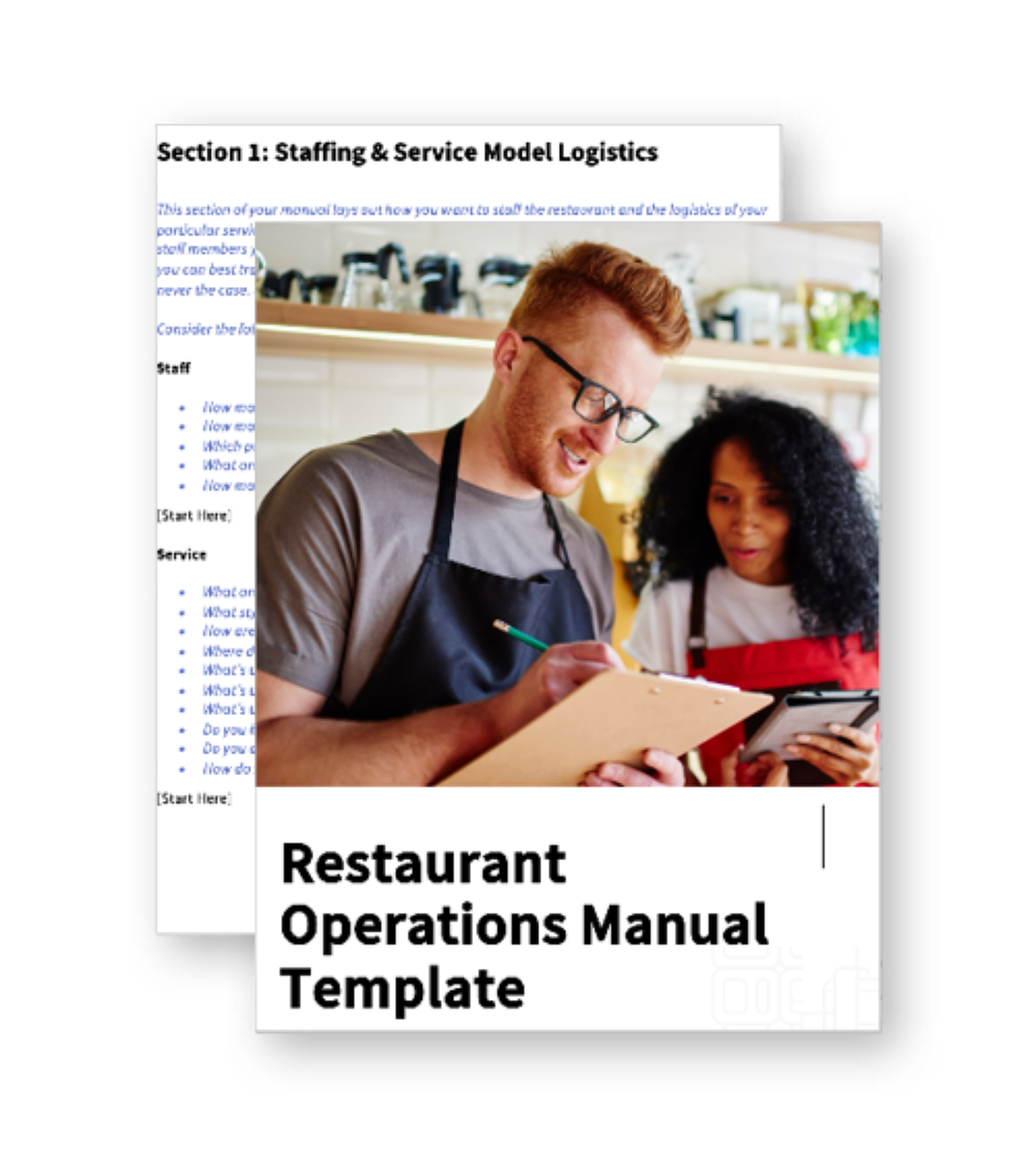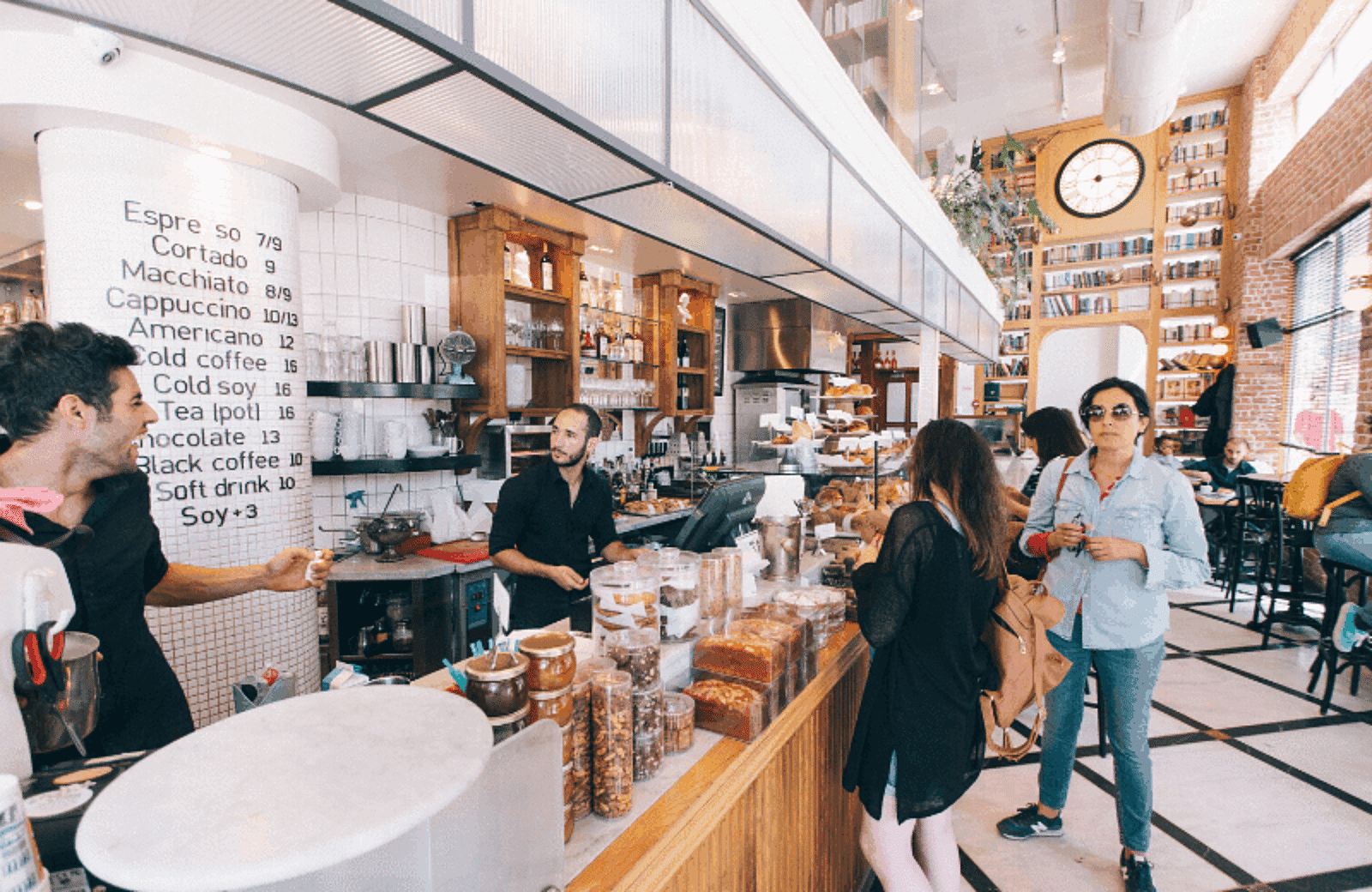
Update Your Restaurant Service Model to Thrive in Your Busy Season
Harmonize your restaurant service model with your cuisine, sales channels, labor force, and other key components to prepare for your busy season.

Tessa ZuluagaAuthor


Restaurant Operations Manual Template
Use this free template to easily outline all of your operating procedures and make day-to-day operations as consistent as possible.
Get free downloadIn the restaurant industry, different businesses are busy at different times. Your restaurant's busy season may depend on your location, theme/concept, and local weather. However, there are ways to both keep your restaurant steady no matter the season, as well as prepare your restaurant for the busiest times of the year. In this post, we will share best practices for your restaurant to prepare for the rush.
In this article, you will learn:
The common restaurant busy season
Different types of restaurant service models
What service model(s) are suitable for your restaurant
How technology can help your restaurant thrive year-round
Ready? Let’s dive in.
Preparing for busy season
So you’re preparing your restaurant for its busy season, huh? You’re planning on opening your patio, curating seasonal menu items, and looking forward to a full restaurant. Here are some tips to consider as the weather gets a little warmer.
What is restaurant busy season?
In the restaurant industry, the busy season is most commonly from April through September. This is because most tourists travel during this time range, increasing covers at restaurants located in prime vacation destinations. These restaurants specialize in summer vacation, spring training, and tropical themes.
However, some restaurants thrive in the fall or winter seasons. This is because some restaurants are in the business of holiday parties, football season, and pumpkin beer.
It’s important for these restaurants to still step up their game in the warmer months. This way, they can both keep up with their competition and retain staff from going elsewhere for the season. In order to do this, it’s important to consider your restaurant service model.
Types of restaurant service models
Service models in the restaurant industry are ways of preparing, presenting, and distributing food to your guests. It includes everything from when the guest enters your restaurant (or your digital storefront) and ends once payment is completed. It’s critical that your restaurant service model co-aligns with your restaurant type, theme, and other key components.
The two most common service models for restaurants are table service and counter service:
Table service is your standard dining experience where guests are served by a waitstaff member throughout the entire course of their meal.
Counter service is a quicker service experience, where guests order their meal at a counter, pay immediately, and then wait for the meal to come out for them to grab themselves.
Some less common styles of service include:
All-you-can-eat is the service type in which guests pay one price for as much food as they want, what’s more American than that? All-you-can-eat plates cost about $20 on average and rely heavily on high foot traffic.
A buffet style is a “cheaper” service type because it has fewer labor costs, as guests completely serve themselves. Buffets also tend to put cheaper items, with higher profit margins, at the beginning of the buffet so guests fill their plates with lower costs items first.
Hybrid or half-service In this model, the restaurant only has to hire cashiers, bartenders, and food runners for front-of-house, and table turns happen much faster — roughly every 40 minutes instead of every hour.
Small plates service is the type you probably know as tapas, dim sum, or meze. Each of these types originated in different countries but essentially means that the server brings several small plates out through the course of the dining experience (as opposed to the traditional route of an appetizer and then one large dinner entree).
Prix fixe menu is a service model that’s popular in the fine dining industry. Prix fixe means fixed-price in French, and the term is used to describe when a restaurant has a set menu for the evening, with little to no customization, and with several courses for each guest.
And lastly, the service type that has been wildly increasing in popularity in recent years is build-your-own service.
Build-your-own service is most popular with fast-food restaurants. Bill Guilfoyle, associate professor of business management at The Culinary Institute of America in Hyde Park, New York, says “The reason is Gen Y, the millennials” and that “They don’t want the same old thing, but would rather do their own thing”. Build-your-own services focus less on menus and more on optimization per ingredient and costs.
These are the service types guests are the most familiar with. However, as the restaurant industry changes, new service types are being created. For example, with Toast Mobile Order & Pay guests can easily scan a QR code to browse the menu, order, and pay, all from their mobile device. Plus with Apple Pay, guests can pay in less than 10 seconds. With modern technology like this, the service industry is constantly changing.
Rethinking your service model for busy season
It’s crucial you choose the right service model for the busy season for your specific business. This is dependent on your clientele, cuisine, and restaurant concept. Read on to learn how to choose the right service model for your restaurant.
What service model is right for you
Because of factors such as the labor shortage and seasonality, you may need to consider a change in service models. In order to do this you need to analyze your model, look back at data, consider your staff, and reevaluate your guest experience. Let’s get into it.
And for more information, check out this article on how to choose the right service model for your restaurant.
Analyze your current model
First, take a look at your restaurant’s current state. Identify your current service model and analyze its pros and cons. Then determine which of those factors matters the most to your restaurant business. What’s going well and what could be improved?
For example, a restaurant may notice that they consistently experience long wait times during peak hours. By analyzing their current model, they may discover that they are understaffed during these times or that they are not utilizing their available seating efficiently. Based on this analysis, they can make adjustments. These may include simply hiring additional staff or reconfiguring their floor plan. However, it also might mean the restaurant needs a shift in service models to reduce wait times and improve the customer experience.
Look back at the data and technology
When in doubt, check the data and analytics. Data is essential for making a good decision. Some insights to look at are labor costs, inventory costs, and guest satisfaction. Consider what technology you’re using as well, and how it is impacting your business. Is your POS a good fit for your restaurant? Some other technologies to examine are:
Self-ordering kiosks
Online ordering system
Consider your hiring and staffing
A major key component to choosing the right service model is your labor costs. What matters to your guests most, and what are you willing to sacrifice? The labor crisis is making it difficult for restaurants to fully staff their restaurants. A new service model may take some of this strain off your business. As discussed earlier, some service models to consider for lower labor costs are:
Counter service
All you can eat
Buffet style
Hybrid or half-service
Mobile order & pay
Reevaluate the guest experience
78% of millennials say they would rather spend money on an experience, such as a restaurant or other activity, compared to purchasing an item from a store. Needless to say, your guest experience matters. What have your guests been saying? You can check out some ways to solicit guest feedback for your restaurant here. Take yourself through a night in your own restaurant, and note what could be improved upon.
Check out this article How to Train Servers to Create a Great Guest Experience for more tips and ideas on good dining experiences.
New Steps of Service, powered by Toast
The steps of service your staff takes refers to the process they take to greet a guest, take their order, enter it in your POS, and deliver it to the table. This also includes all in-between steps such as running drinks, extra sides, and dropping the bill. How efficient these steps are can change the entire flow of your restaurant and immediately strengthen your business. Because of this, your steps of service are especially important during your restaurant’s busy season.
Toast’s New Steps of Service is cutting-edge, guest-focused restaurant technology in action. It can help restaurants unlock better guest experiences, more efficient staff, increased ticket sizes, higher tips, and real top- and bottom-line impacts.
It includes the strategic implementation of handheld POS, guest-driven order and pay via QR codes, and self-service kiosks. All these Toast products help give guests the power to order and pay as they please — while increasing the efficiency of your front-of-house staff by freeing them from terminals. Toast’s New Steps of Service can make a difference for your restaurant during your busy season.
By adopting a customer-centric approach, focusing on efficient operations, and implementing technology solutions, you can prepare for busy season. The key is to stay adaptable. It’s essential you continuously evaluate the strategies of your business. With the right tools and service models, your restaurant can successfully navigate the busy season and emerge stronger than ever.
Is this article helpful?
DISCLAIMER: This information is provided for general informational purposes only, and publication does not constitute an endorsement. Toast does not warrant the accuracy or completeness of any information, text, graphics, links, or other items contained within this content. Toast does not guarantee you will achieve any specific results if you follow any advice herein. It may be advisable for you to consult with a professional such as a lawyer, accountant, or business advisor for advice specific to your situation.
Read More
Subscribe to On the Line
Sign up to get industry intel, advice, tools, and honest takes from real people tackling their restaurants’ greatest challenges.



